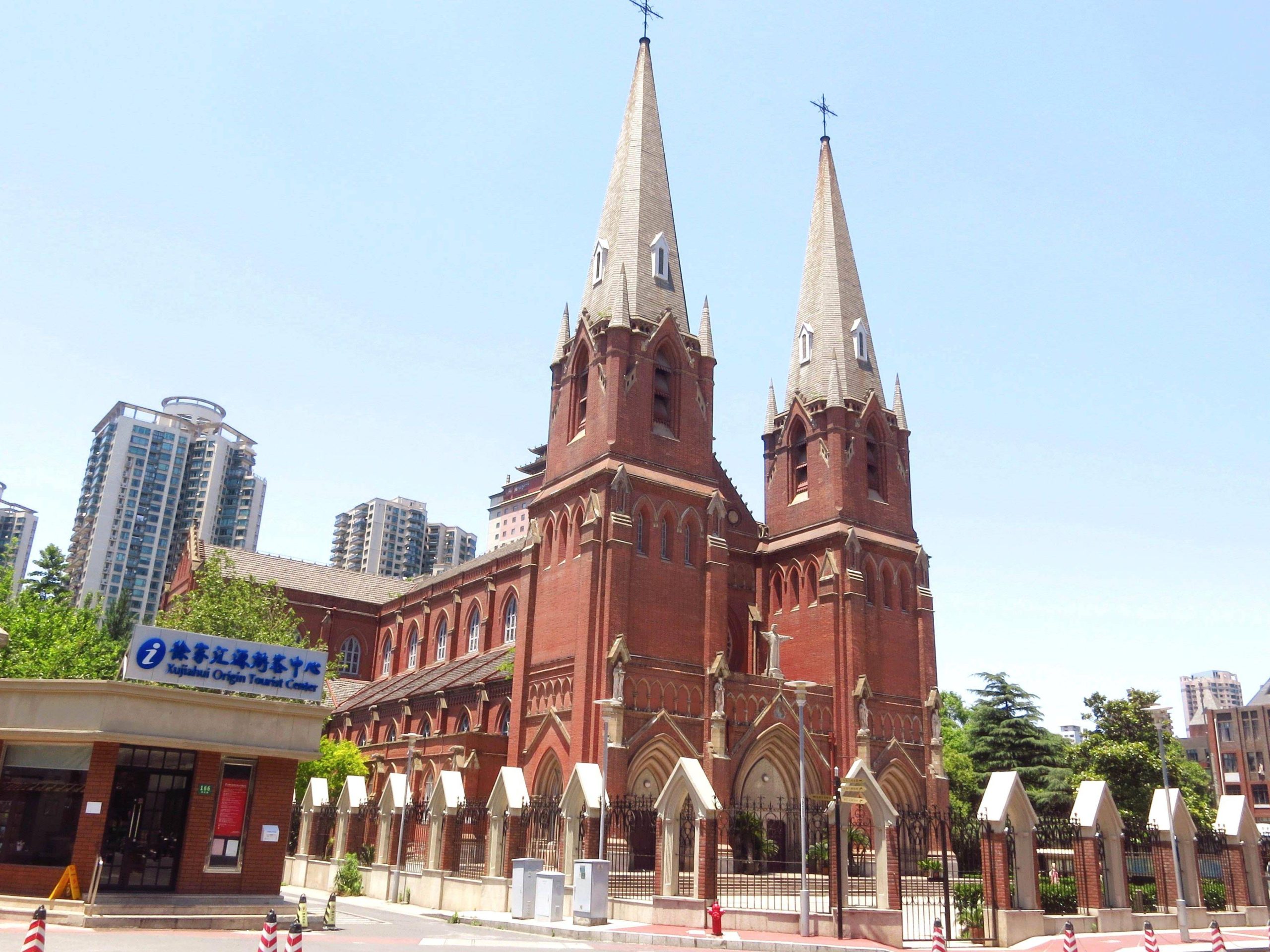✨ Overview
Shanghai is a city where faith meets the future. Here, Gothic cathedrals stand beside glittering skyscrapers, Buddhist temples share streets with modern art centers, and old synagogues tell stories of survival and hope. This blend of religion and architecture makes Shanghai not just a global metropolis — but a living museum of harmony between East and West.
⛪ Xujiahui Cathedral – A Touch of Gothic Grace
Rising above the lively Xujiahui district, St. Ignatius Cathedral is one of China’s largest and most impressive Gothic churches. Built in 1910, it reflects the moment Shanghai opened its arms to the world.
Step inside and you’ll find soaring arches, colorful stained glass, and quiet pews where sunlight dances through the windows. It’s not just a church — it’s a reminder of Shanghai’s century-long dialogue with the West.
Visitor Info:
- 🕒 Open daily, 8:00 AM – 5:00 PM
- 🚇 Metro Line 1, Xujiahui Station
- 🌤 Best time: Morning, when light fills the nave
🪷 Jade Buddha Temple – Calm in the City
A short metro ride away, the Jade Buddha Temple offers peaceful contrast to Shanghai’s rush. Founded in 1882, it’s home to two stunning jade Buddha statues brought from Myanmar.
The air smells of incense and sandalwood, and the sound of chanting monks fills the courtyards. Visitors come to pray, meditate, or simply enjoy the temple’s graceful architecture — proof that serenity can still thrive in the modern city.
Visitor Info:
- 🕒 Open 8:00 AM – 4:30 PM
- 🚇 Metro Line 7, Changshou Road Station
- 🌸 Best time: Early morning or late afternoon
- 🙏 Dress modestly and avoid loud conversation
🕍 Jewish Refugees Museum – A Story of Hope
During World War II, Shanghai became a safe haven for more than 20,000 Jewish refugees — one of the few cities in the world to open its doors. Today, the Shanghai Jewish Refugees Museum, housed in the former Ohel Moshe Synagogue, preserves this moving chapter of history.
Exhibits include photographs, letters, and personal stories that capture the friendship between refugees and local residents. It’s a powerful reminder of compassion in dark times — and a must-visit for anyone interested in human history.
Visitor Info:
- 🕒 Open Tuesday–Sunday, 9:00 AM – 5:00 PM
- 🚇 Metro Line 12, Tilanqiao Station
- 📷 Photography allowed in most areas
🏙 Skyscrapers with Soul – Faith in the Modern Skyline
Look east across the Huangpu River and you’ll see a different kind of temple — one made of glass and steel. The towers of Lujiazui — including Shanghai Tower, Jin Mao Tower, and the World Financial Center — form a futuristic skyline that glows like a cathedral of light.
Each has its own personality: the Jin Mao Tower draws inspiration from traditional pagoda design, while the Shanghai Tower spirals upward like a modern symbol of progress. Together, they show how Shanghai’s spiritual energy has evolved into ambition, creativity, and global vision.
Travel Tip:
Head to the Shanghai Tower Observation Deck (118th floor) around 7–9 PM for a breathtaking night view.
🌏 Harmony of Faiths – The Spirit of Shanghai
What makes Shanghai truly special isn’t just its buildings — it’s the peaceful coexistence of belief systems. Here, churches, temples, mosques, and synagogues stand side by side. Locals may light incense in the morning and attend Mass in the evening. This quiet tolerance defines Shanghai’s spirit: open-minded, inclusive, and forward-looking.
🚶 Suggested One-Day Route
Morning: Xujiahui Cathedral → Jade Buddha Temple
Afternoon: Jewish Refugees Museum
Evening: Lujiazui skyline and river night view
🍵 Travel Essentials
- Best seasons: Spring and autumn (mild weather, fewer crowds)
- Accommodation: Xujiahui for convenience, Jing’an for culture, Lujiazui for luxury views
- Food to try: Vegetarian temple cuisine, local noodle shops, or river-view fine dining
- Etiquette: Be respectful in sacred spaces; avoid flash photography inside temples or churches
🌸 Conclusion
Shanghai is more than a city of commerce and skyscrapers — it’s a city of stories, faith, and connection. Whether you’re admiring a Gothic cathedral or gazing from the top of a tower, you’ll feel the same message echoing across time: harmony in diversity, beauty in contrast.

